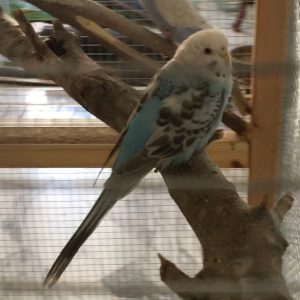Overview
The Opaline mutation is a sex-linked recessive trait in budgies that changes the normal wing and head patterns. It reduces the amount of melanin pigment on the wings, making the bird appear brighter and more colorful compared to a standard budgie.
This is one of the most recognizable mutations and is popular among breeders for its unique and attractive appearance.



Genetic Basis
-
Chromosomes: In budgies, males are XX and females are XY.
-
Inheritance: The Opaline gene is carried on the X chromosome.
-
Males (XX): Need two copies of the Opaline gene to visually show the mutation. With only one copy, they are “split” and can pass the gene to offspring without showing it.
-
Females (XY): Only need one copy to express the mutation, since they have just a single X chromosome.
-
Because of this sex-linked pattern, Opaline often appears more quickly in females than in males during breeding programs.
Visual Characteristics
Opaline budgies are easy to recognize by their distinct wing and head features:
-
Wing color change:
-
In the green series, normal wings are black with yellow edges. In Opalines, the yellow is largely replaced by the green body color, giving a black + green effect.
-
In the blue series, normal wings are black with white edges. In Opalines, the white is replaced by the blue body color, giving a black + blue effect.
-
-
Reduced wing barring: The black markings are less dense, more broken, or patchy compared to wild type.
-
Distinctive head patch: A “V-shaped” area of body color appears on the back of the head and neck where normal budgies show dark barring.
-
Brighter body color: Because of reduced wing contrast, the body color appears more intense and spreads visually over a larger area.
-
Throat spots: Often smaller, fewer, or irregular compared to normal budgies.
Overall, Opalines look “softer” and more colorful than standard budgies, with wing markings that blend into the body color rather than standing out sharply.
Significance
The Opaline mutation is one of the classic and widely bred traits in budgies. Its distinctive appearance makes it easy to recognize and highly valued both in pet birds and in exhibition lines.
Breeding Notes
Symbols:
-
X = normal allele
-
Xᵒ = opaline allele
-
Y = female chromosome
Punnett Square Examples
Example 1: Opaline Male (XᵒXᵒ) × Normal Female (XY)
| X (from female) | Y (from female) | |
|---|---|---|
| Xᵒ (male) | XᵒX (split male) | XᵒY (Opaline female) |
| Xᵒ (male) | XᵒX (split male) | XᵒY (Opaline female) |
Result:
-
50% split males (look normal, carry Opaline)
-
50% Opaline females
Example 2: Split Male (XᵒX) × Normal Female (XY)
| X (from female) | Y (from female) | |
|---|---|---|
| X (male) | XX (Normal male) | XY (Normal female) |
| Xᵒ (male) | XᵒX (split male) | XᵒY (Opaline female) |
Result:
-
25% Normal males
-
25% Split males
-
25% Normal females
-
25% Opaline females
Example 3: Split Male (XᵒX) × Opaline Female (XᵒY)
| Xᵒ (from female) | Y (from female) | |
|---|---|---|
| X (male) | XᵒX (split male) | XY (Normal female) |
| Xᵒ (male) | XᵒXᵒ (Opaline male) | XᵒY (Opaline female) |
Result:
-
25% Split males
-
25% Opaline males
-
25% Normal females
-
25% Opaline females
These examples show how Opaline passes differently through males and females, and why breeders carefully plan pairings to increase the chances of producing visible Opaline offspring.
